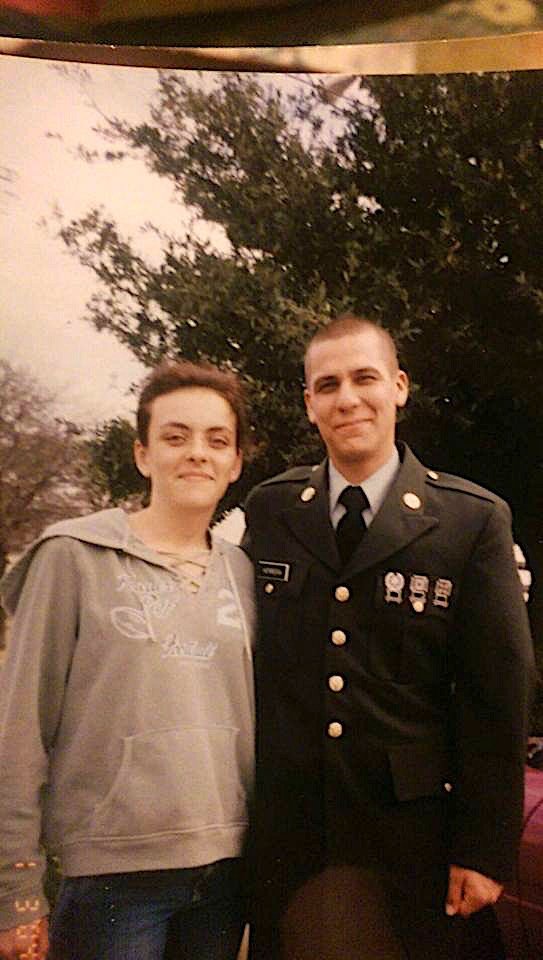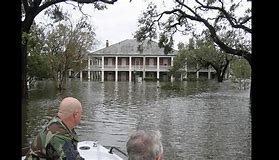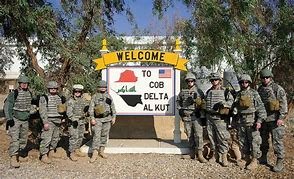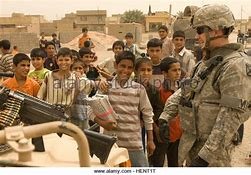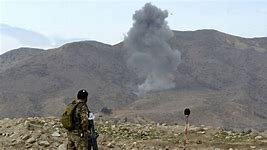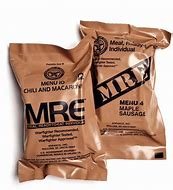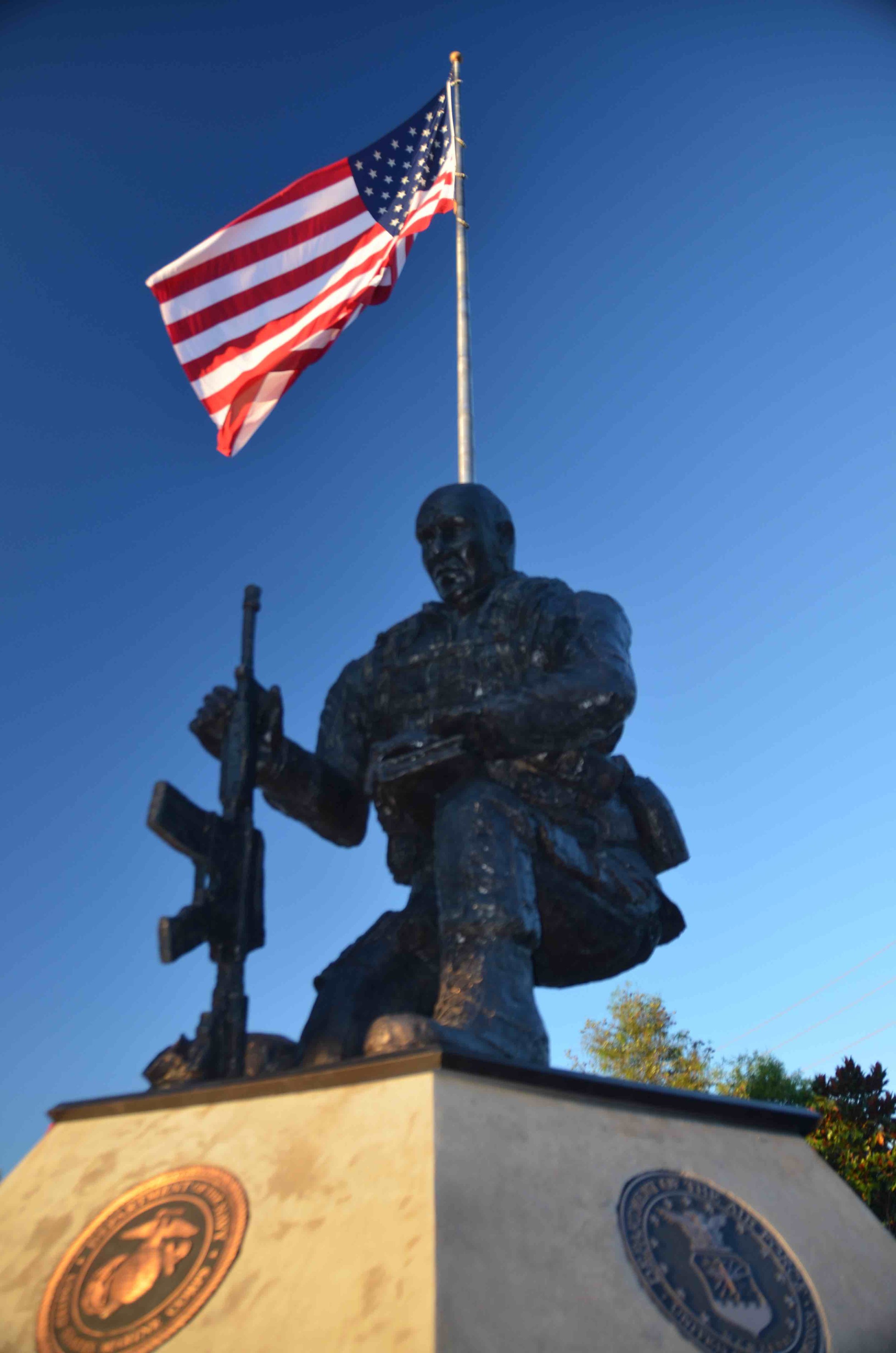Juan Herrera
Juan Herrera, U.S. Army, Canton, Texas
Juan Herrera was born in Dallas, Texas on December 26, 1978.
He had two older sisters, Rhonda and Leslie. His dad’s name was Jose Herrera, who passed away from a heart attack when Juan was six years old, and his mom Sara.
“I lived in Dallas until I was about 13 and we moved to Azle where I graduated from High School and went to one semester of college at Eastville in Dallas.”
VOLUNTEERED FOR MILITARY
“I volunteered for the military in March of 2003. I always wanted to go into the Army since I was a little kid. When I was young I would ask for canteen and mess kits for Christmas and I like watching all the Rambo movies. I shopped a lot at the Army-Navy stores and bought fatigues and combat boots,” said Juan.
“The invasion of Iraq was around this time and I wanted to go to war. So, I joined the Army for an eight-year commitment. I talked to my wife, Crystal and she was very supportive. It was six years in the Army National Guard and two years active. I felt It was my duty as an American to join up for the military. I signed up in Shreveport, Louisiana where I went thru the Military Entry Processing Station (MEPS).
I was in for six months until they shipped me out to Ft. Knox, Kentucky where I went for Basic. I was 24 when I enlisted so I was older than most of the other guys. I am from Texas and it was cold and miserable in the winter in Kentucky. I was in basic and Advanced Individual Training (AIT) for about five and half months.
In AIT we worked in small groups where we worked observation points observing the enemy and reported back to command. We were the eyes of the battlefield. My MOS was 19 Delta, which was a Calvary Scout. Shortly after that I reclassified to Infantry which I enjoyed more than being a scout.”
Juan was in the Army Reserve and tried to go active duty but the Commander wasn’t releasing anyone. Five months later he was activated in August 2004 to go to Iraq. It was where he wanted to be.
HEADED TO HURRICANE KATRINA
Three days before he was supposed to ship out he broke his wrist. “I was extremely disappointed. I ended up going on search and rescue mission down in New Orleans after Hurricane Katrina hit the Gulf Coast. We were there about two days after it hit. Everything was still about four or five feet under water when our unit arrived.”
Juan’s unit was camped out at the Children’s Hospital which was right across from the 5th Ward near Xavier and Tulane College. “That was devastating to see. The Old Plantation homes with hundred-year-old trees laid across them. That was part of history and hard to see. Just demolished,” said Juan shaking his head.
“We were at the tennis courts at the Children’s Hospital where we set up a tent city. It was miserable and humid. Not everyone had mosquito nets. I heard the buzzing all night long. It still messes with me and raises my anxiety really bad. We were there at the end of August, hot as hell and we had to sleep with the sleeping bag over our heads. You either sweat or got eaten up by mosquitos. We were there for three weeks. We then came back to Texas for Hurricane Rita. We were there just for support, mostly delivering water.”
OCTOBER 2006 TO IRAQ
A mission came up in August 2006 and once again Juan volunteered for the assignment. He went to Fort Dix, New Jersey for pre-training. He was there for three months and then was headed to Iraq in October of 2006.
“We were attached to a Military Police (MP) unit. It was out of my MOS. We were a police transition team in Iraq, dealing with POW’s. We went out with the Iraqi police, trained them and did joint missions with them. However, you couldn’t trust the Iraqi Police. You don’t know who is bad and who is good. My platoon was stationed in Al Kut, Iraq on an old airfield. We had about thirty people in our platoon.
Al Kut was south of Baghdad. Our missions included dismount missions and scope walk thru and present patrols. We set up Technical Control Points (TCP). We pulled over vehicles and did random searches working with the Iraqi police. We were away from the main U.S. forces and got to pretty much what we wanted to do.
We interacted with the locals including the kids handing out candy. It was more laid back than what was going on in Baghdad. Our area wasn’t highly kinetic,” recalled Juan.
“We were on a Coalition camp so I got to meet Polish, Ukrainians, El Salvadorians, Georgians, Romanians, and Kazakhstanis. It was neat working with them. We communicated mostly just in broken English. We had an Army Special Forces group there who trained the Iraqi Army. Sometimes we trained with them and that was cool,” smiled Juan.
“We got rocketed a few times from old Russian rockets. We had a large and spread out camp and their makeshift launchers weren’t very accurate. If they hit something they got lucky. We did get some small fire and ended up wounding a couple and took them in as POW’s until they were transferred. We had a couple of IED’s, but nothing serious there. I stayed in Al Kut for twelve months,” recalled Juan.
HEADING TO AFGHANISTAN
Juan was sent home for seven months for some R & R. Once again, Juan volunteered for war. This time to serve in Afghanistan. You have been to war, you come back seven months to the states and then volunteer for war again, why? “I like war,” Juan said emphatically. “The high stress atmosphere was an adrenalin rush and it was a different country,” he said.
“I was in the mountains, the Hindu Kush. We flew into Kurdistan, but this time our mission is different. It was a new military concept to bring the tactical side to military intelligence. There were about 40 infantry men who got cross trained and imbedded with a Military Intelligence (MI) battalion,” said Juan recalling his tour in Afghanistan.
“I was one of those 40 infantry men. I am now doing both, infantry and intelligence. We all had top secret clearances for the equipment we have to use. I was signal intelligence and my job was to monitor radio traffic, translate it and relay that intel to the battlefield commander.
It was RC East in Afghanistan, and we were about twenty miles from Pakistan. It is a safe haven for the Taliban and there is a lot of chatter going back and forth. The language over there is Pashtun. There were seven of us in our Hutch. Two interpreters with top clearance and five of us. When the Taliban keyed up we would get a line of bearing of where their radio keys up at. We would log it all in a computer. After a year in country you would start picking up on certain words. We would learn how to translate without our interpreter.
The main chatter was attacking the Americans and attacking the helicopters. After every engagement, they would get on the radio. It was a morale booster for them. They would say, “We killed fifty Americans.” They didn’t hit anybody,” Juan said laughing. “These Taliban would sit up in the mountains and relay all this chatter, from mountain to mountain. We were 15-17,000 feet above sea level.” According to Juan it was the same mountain ranges where Marcus Lutrell and his Navy Seal Unit was ambushed. The operation was made into a Hollywood movie called, “Lone Survivor.”
“We would leave our camp at 2300 at night and set up in the mountains by 0500 in the morning. We were a team where we would go and set up Operations (OP’s). You had a team at base and a team out in the valley or mountains with the same equipment. We would send a convoy up in the valleys and sit there and monitor the chatter. They were trying to draw fire, essentially guinea pigs. We would get them to start moving and engaging on these vehicles so we could get their coordinates. Our air support which were Kiowa Warriors, Apache A-10s, or F-15’s. We would relay to them our line of bearings. The pilots could go right on top of our bearings, find the enemy and engage them,” Juan said.
“We had battlefield commanders, forward observers that were trained to call in fast movers and (JTAC), Joint Tactical Air Controllers, with the Air Force. There are a lot of moving parts for an engagement of the enemy. Every mission is a fast moving, high tempo operation.
Afghanistan was my favorite mission. We were involved with a lot of contact. It was a high stress situation. I loved it,” Juan said shaking his head.
“The Taliban had eyes on us, we heard the chatter a lot. We got sniper fire, we were vulnerable. They would mortar us and hit us with small arms fire. They would hit us with mortar and sniper fire several times a week. They would catch us walking back from our missions. Walking to chow, showers, to the latrine, you never knew when you would get hit. We once got hit from all three sides and we had to retreat about 300 meters. That doesn’t sound like much but it is on the side of a mountain, especially when you are taking fire. Rounds would hit in front of me as I am running. Physically I never got hit. You come to terms about death. You come to accept that any moment is your last,” Juan said lowering his head.
“Afghanistan is the most beautiful country I have ever seen. Five o’clock in the morning when the sun starts cresting the ridgeline is beautiful.
Terraced fields in the rugged mountains of Kunar Province, Afghanistan.
Terraced fields in the rugged mountains of Kunar Province, Afghanistan.
The Afghanis build terraces (retaining walls) on the side of the mountains to farm. They stack rocks 8-10 feet high to make level ground on the side of a mountain. That took thousands of years to make. They would stair climb all the way up the side of a mountain. They planted corn and wheat and there were small poppy fields.
When we got in country we were told to leave the poppy fields alone, they were Taliban controlled. That is how the Taliban makes money. They harvest the poppy, make Heroin, sell it and make money. Most of the ones we saw were small and probably used for medicinal reasons.
Marijuana grew like a wild weed. They grow like sticker burrows in Texas. It is everywhere. The sides of the mountains have very fertile grounds. It is a very beautiful country,” Juan said looking off into the distance.
“There were local Afghan Nationals that worked in our camp. Some of the carpenters near my hutch would take pallets and make furniture out of it. The guy who was in charge of laundry point was an old school mujahedeen fighter commander. He told us stories about fighting the Russians. You can see it in his hands, his skin, his face and his eyes, he has been around.
We once got them a paid day off, gave them some money for a goat but ended up buying a sheep. A nice big sheep. It cost $200 for this sheep. We got a mountain dew bottle full of vodka, and a bunch of vegetables. We have video of them slaughtering the sheep. Their ritual and prayer ceremony was for their life and this sheep. The meal was great and we really enjoyed eating a feast with our Afghan friends,” said a smiling Juan.
“Fighting in Afghanistan was a pointless battle. Not far from Vietnam. A political war. Those people have been fighting for thousands of years. You are not going to beat them. The Russians didn’t. I do know that I would rather fight over there than to fight here. I would rather it be their country and not my country. I do agree with war because I am a patriot. I believe every male should serve in the military.
I served twelve months in Afghanistan.”
COMING HOME
“Over there it was different. You come home, you are a civilian. But it is different to know, that in your heart, and in your soul, you have already accepted death. It is not easy to deal with,” and Juan paused.
“I went thru a PTSD program in Bonham.
They talk about stuck points, one of them is trust issues like trusting anybody of Muslim descent. I am not racist, but I have seen a side that other people haven’t. I don’t shop at their stores, and I don’t give them my money or fund them in any way. I call them Hajjes. Seeing them automatically raises anxiety.
INFO: The Van Zandt County Veterans Memorial and PR Director Phil Smith will be writing a 6-part Series dealing with PTSD. The series will begin on October 1st and run thru Veterans Day. We will be interviewing veterans, PTSD counselors, and doctors from the VA. Please follow us on Facebook at Van Zandt County Veterans Memorial and on our webpage at www.vzcm.org.
“It is nice coming home, but nice being at war too. I liked the comradeship, the fighting and the adrenalin. I hate the movie, The Hurt Locker. The best thing about that movie is the very beginning. It said, “Adrenalin is addictive, and war is the Drug.” That is extremely true.
How do you get off that drug Juan? “You never do.” I wish I was still over there fighting right now. It is hard to get away from. When there was no more war, I left. I am not big on wearing berets, walking around saluting officers. I am not a Garrison type soldier,” said Juan.
INFO: The garrison is the people who stay behind and keep working when the rest go overseas to war. In the US Army sense, a base will typically have “tenant units” like deployable divisions, brigades, and battalions, plus a “garrison” of troops who stay on the base to run things there rather than deploying overseas to the war.” (SOURCE: www.quora.com)
“I stayed in the Army National Guard until 2015 when I got out. I ended up serving twelve years. There was no more war so that made my decision easier.
I enjoyed the friends I made in the military. The knowledge I learned and my deployments. If I had to do it all over, I would do it again. I would try to volunteer even more. I have a lot of funny stories about the military but probably not that appropriate to print. You are an infantry man around hundreds of guys, you shit, shower and shave in the same place and you share the same frickin fox holes. You smell their farts, and guys who haven’t showered in weeks.” Juan and I got a huge laugh on these stories. He is so right.
“I will never eat Cordon Bleu again. The Army has a pre-made Cordon Bleu. In Afghanistan we were the last stop the chow truck made. All the other camps before us got the food. The good stuff. We ate Cordon Bleu for breakfast, lunch and supper for almost two months straight. I also try to avoid eating MRE’s.
INFO: So, what is an MRE? The MRE (Meal, Ready to Eat) is a totally self-contained complete meal. One MRE equals one meal. The packaging of an MRE is designed to withstand rough conditions and exposure to the elements. Inside each MRE bag is an entree and a variety of other food and drink items. (SOURCE: www.mreinfo.com)
“I ate so many MRE’s that I will not have to be embalmed when I die. I have so many preservatives in me from MRE’s. I will still eat an MRE before I eat a Cordon Bleu,” he said laughing.
“I did eat a Falafel in Iraq once and loved it.”
INFO: Falafel, a fried ball or patty made from spiced chickpeas or fava beans. Originally from Egypt, falafel is a form of fast food in the Middle East, where it is also served as a mezze. Kubba, a dish made of burghul, chopped meat, and spices. The best-known variety is a torpedo-shaped burghul shell stuffed with chopped meat and fried. Other varieties are baked, poached, or even served raw. (SOURCE: www.widipedia.com)
“To me, it was like a Pita bread with vegetables, full of fresh lettuce, tomatoes and onion. Then it had these fried crispy things, almost looks like a hashbrown stuffed in it. The vegetables in it were full of flavor. BUT, I know how they irrigate their farms. With human waste. It was hard to put it out of my mind, but it was good. The tomatoes were so juicy, so red,” Juan shakes his head laughing at the memory.
THE KNEELING SOLDIER AT THE VETERANS MEMORIAL
“I have been living in Van Zandt County since 2002. My mom and three kids lived out here. My wife, Crystal and I have been married 19 years.
Crystal used to bartend up at the VFW next to the interstate near the Ford House. They had a meeting and they were talking about the Veterans Memorial in Canton. This was around 2005. TexDot donated the land and they were looking for a veteran from the county to pose for the Kneeling Soldier Memorial on their Plaza. My wife volunteered me. I knew most of the other veterans involved. So, I agreed.
The Memorial contacted me and asked me to get in touch with Ed Pickett, a local Canton sculptor. Ed owned a Winery at the time.
INFO: Read more on our Air Force veteran from Canton, Ed Pickett.
I sat out in the ditch in front of the Winery for a couple of days. I posed for hours, in the heat, in full gear in one position, taking pictures. Ed had to have very specific photographs. They even included the wrinkles in my pants leg down to the boots. Very detailed. I put in a lot of hours posing. Ed needing more pictures and a mold of my face, so he could make a cast. They did an excellent job on the statue.
The Kneeling Soldier Statue is not about me, it is about the fallen soldiers. That is what the whole memorial is about. It is for my buddies that are no longer with us. It is for all the fallen soldiers.
Van Zandt County has the nicest Veterans Memorial than any I have ever seen,” quipped Juan.
“One day I would like to visit Arlington National Cemetery and the Tomb of the Unknown Soldier in Washington. I like everything about the old Guard and would love to see the Changing of the Guard. I would also like to visit the 911 Memorial in New York. When I was in Fort Nix, New Jersey I could see the lights from the Memorial. It was spectacular,” said Juan.
We ask our brave soldiers to fight in faraway wars. Some come back and some don’t. Some of those return home carrying the burden of guilt, shame and the scars of war.
Many are battling the effects from the chemical, Agent Orange. Many suffer from (PTSD), Post Traumatic Stress Disorder. We ask them to fight and die for this country. The least we can do is take care of them when they return.
Phil Smith
GOD BLESS OUR VETERANS AND GOD BLESS AMERICA
Juan, thank you for your service to our country while serving in the United States Army. Your courage and bravery will not be forgotten.
NOTE: Meet other Veterans from Van Zandt County by going to the top of this page and click on MEET OUR VETERANS and click one of the (5) branches of services and the veterans last name first and click to read.
“Every Veteran has a story to tell.” Phil Smith
(ALL photos on this Facebook page are ©2019, Phil Smith and Van Zandt County Veterans Memorial. NO unauthorized use without permission) All Rights Reserved.


